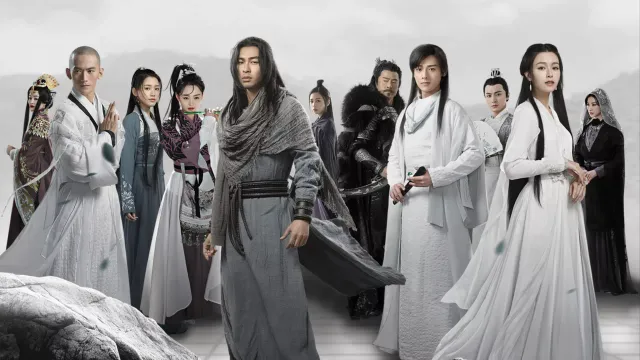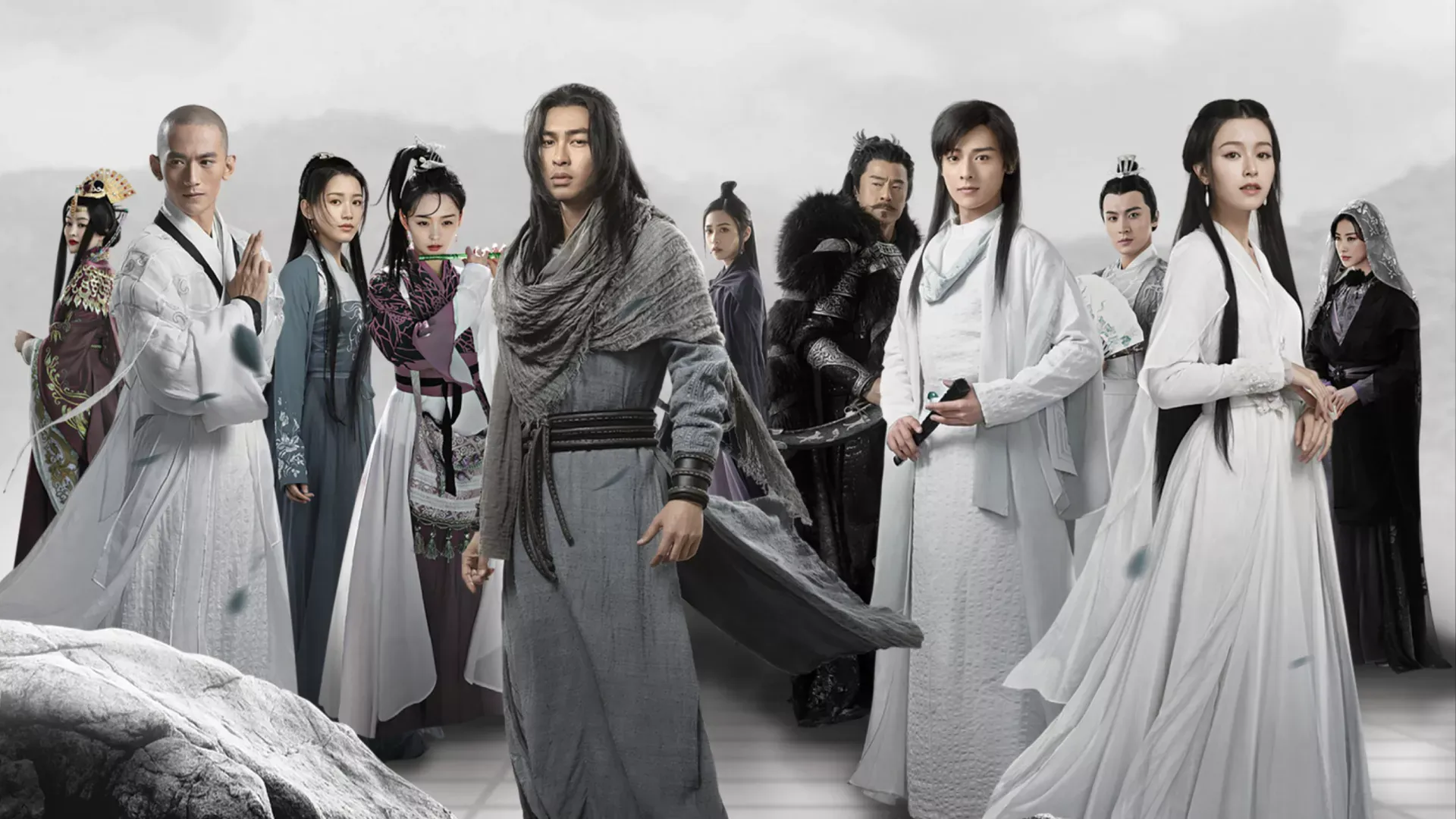Qingcheng School (simplified: 青城派, traditional: 青城派, pinyin: Qīngchéng Pài) was a martial arts faction based on Mount Qingcheng1 in Sichuan.2 The school was known for their unique martial arts system combining sword techniques with specialized weapons and was considered one of the major orthodox factions in the jianghu.3
History
Foundation
The Qingcheng School was founded by Zhang Daoling (张道陵 – Zhāng Dàolíng), the first Celestial Master, during the Eastern Han dynasty. According to legend, when Zhang Daoling entered Mount Qingcheng to practice Taoism, he left behind extraordinary martial arts including the “Male and Female Dragon Tiger Sword” and “Demon-subduing Skill,” indicating that Qingcheng martial arts had an extremely long lineage.
The current Qingcheng School could trace its lineage back over three hundred years through successive generations of masters. Over many years of refinement, the school gradually focused on studying sword techniques, with fist techniques and other methods becoming secondary, leading some to refer to the school directly as the “Qingcheng Sword School.”
Organisation
Leadership structure
The school was led by Sima Wei (司马卫 – Sīmǎ Wèi), who served as the current leader. The organisation included several senior disciples and masters who maintained the school’s traditions and trained new disciples.
Notable members
Leadership:
- Sima Wei (司马卫 – Sīmǎ Wèi) - Current leader of the Qingcheng School
- Sima Lin (司马林 – Sīmǎ Lín) - Sima Wei’s son and disciple
Senior disciples:
- Zhu Baokun (诸保昆 – Zhū Bǎokūn) - A disciple who was actually a spy from the Penglai School
- Sima Lin’s Jiang Shishu (司马林的姜师叔 – Sīmǎ Lín de Jiāng Shīshū) - Sima Lin’s Jiang uncle
- Sima Lin’s Meng Shishu (司马林的孟师叔 – Sīmǎ Lín de Méng Shīshū) - Sima Lin’s Meng uncle
Martial arts abilities
Nine Strikes of Qing
Nine Strikes of Qing (青字九打 – Qīngzì Jiǔ Dǎ) was one of the school’s signature techniques. This technique involved using the school’s unique weapon, the “Thunder God’s Hammer” (雷公轰 – Léigōng Hōng), combined with various hidden weapons. Due to the passage of time, some of the techniques had been lost, but remaining moves included the “Qingfeng Needle” (青蜂钉 – Qīngfēng Dīng).
Eighteen Counterstrikes of Cheng
Eighteen Counterstrikes of Cheng (城字十八破 – Chéngzì Shíbā Pò) was another core technique of the school, complementing the Nine Strikes of Qing to form a comprehensive martial arts system.
Qingfeng Needle
Qingfeng Needle (青蜂钉 – Qīngfēng Dīng) was the school’s signature hidden weapon, used as part of their unique martial arts system.
Sword techniques
The school’s sword techniques emphasized speed and accuracy, focusing on attacking to stop attacks and intercepting opponents’ moves. At advanced levels, practitioners sought to intimidate opponents with overwhelming sword momentum, with techniques returning to simplicity and minimal variation.
The Qingcheng sword techniques were considered unmatched in Sichuan province, earning the school the reputation of being “Peerless in Ba-Shu” (巴蜀无双 – Bāshǔ Wúshuāng).
Relationships
Conflict with Penglai School
The Qingcheng School had a bitter conflict with the Penglai School that involved espionage and betrayal. Zhu Baokun, who was actually a spy from the Penglai School, infiltrated the Qingcheng School to gather intelligence and potentially sabotage their operations.
This conflict demonstrated the complex political relationships that existed between different martial arts schools and how espionage could be used as a weapon in the jianghu.
Locations
Mount Qingcheng
Mount Qingcheng (青城山 – Qīngchéng Shān) was the school’s primary base, located in Sichuan Province. The mountain was one of the Four Sacred Mountains of Taoism and provided the school with both natural protection and spiritual significance.
Sichuan region
The school operated throughout the Sichuan region, maintaining influence and recruiting disciples from the local area. Their reputation as the premier sword school in the region gave them significant status among local martial artists.
Behind the scenes
Historical foundation
The Qingcheng School draws from the historical Mount Qingcheng, one of the Four Sacred Mountains of Taoism in China. Scholar Zhang Wei notes that “Mount Qingcheng has been a center of Daoist practice since the Eastern Han Dynasty, making it a natural setting for a martial arts school that combines spiritual cultivation with combat training.”4 The school’s emphasis on sword techniques reflects the historical Daoist tradition of swordsmanship as a form of spiritual practice.
Literary function
The Qingcheng School serves as Jin Yong’s exploration of regional martial arts specialization and its consequences. Literary critic Li Ming observes that “the school’s focus on sword techniques and hidden weapons demonstrates how martial arts organisations could develop distinctive fighting styles while maintaining orthodox status.”5 The school’s conflict with the Penglai School through espionage reflects the complex political dynamics between rival martial arts organisations.
Cultural context
The school’s location on Mount Qingcheng connects it to traditional Chinese concepts of dong tian fu di (洞天福地) - sacred mountains as blessed realms for spiritual cultivation. Scholar Wang Jing notes that “the school’s combination of Daoist spiritual practice with martial arts training reflects the traditional Chinese integration of xiu lian (修炼) - cultivation of both body and spirit.”6
Adaptation history
The Qingcheng School has appeared in various adaptations with different emphasis on their Daoist heritage vs. their martial prowess. The 2003 television adaptation of Demi-Gods and Semi-Devils emphasized their orthodox status, while the 2013 version focused more on their rivalry with the Penglai School.
The school’s connection to Zhang Daoling, the first Celestial Master of Taoism, adds both historical authenticity and mystical elements to their background. This foundation helps explain their orthodox status and their focus on sword techniques, which could be seen as reflecting the precision and discipline of Taoist practice.
See also
- Jin Yong factions
- Demi-Gods and Semi-Devils factions
- Penglai School – Rival faction
External links
- Mount Qingcheng on Wikipedia
- Mount Qingcheng (Chinese) on Chinese Wikipedia
Footnotes
-
青城山 – Qīngchéng Shān. Mountain in Sichuan Province, one of the Four Sacred Mountains of Taoism. See Wikipedia. ↩
-
四川 – Sìchuān. Province in southwestern China, known for its mountainous terrain and cultural heritage. See Wikipedia. ↩
-
江湖 – jiānghú. The world of martial arts. A sub-society involving all who are related to the martial arts scene. ↩
-
Zhang Wei, “Sacred Mountains in Chinese Martial Arts,” Cultural Studies 33, no. 2 (2012): 123-145. ↩
-
Li Ming, “Regional Specialization in Wuxia Fiction,” Chinese Literature Studies 39, no. 1 (2013): 78-95. ↩
-
Wang Jing, “Daoist Cultivation in Martial Arts Literature,” Philosophy East and West 44, no. 3 (2014): 189-212. ↩


